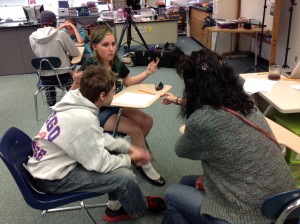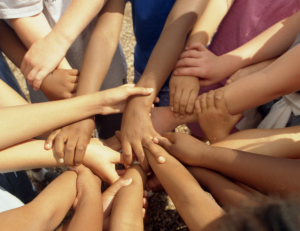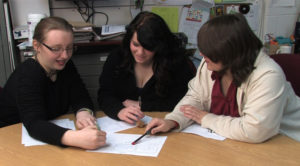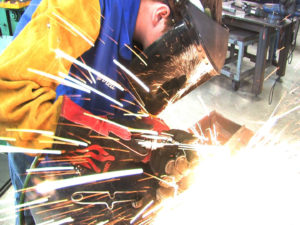As I write this, I pause to quickly grab a pencil and jot down one more thing on my “Bring” list, so I don’t forget when I leave for a foreign country at 8am tomorrow morning. I have more anxiety than I typically do — normally I am happiest and most content moving through space (or preparing to), and love my collaborative-creative projects best of all.
So what, I asked myself, was I worried about this time? I had done quite a bit of social, cultural, and language preparation, spent time with friends and colleagues from this country to help prevent myself from various pitfalls, and although I knew I would have to be on my toes, I also knew I had done what I could, and that lots of listening, grace, good humor and respect, we would muddle through.
Yeeeaaahhh, still worried.
Why? Turns out I am worried about the collaboration process itself. I have met none of the other people (okay, I met my point person’s husband in 2000, but hadn’t seen/worked with him in maybe eight years) and I really have no idea what the various stakeholders expectations are, nor how anyone else involved — especially those folks in the hosting nation — perceive collaborative work and relationships.
To quote “Collaboration, from the Wright Brothers to Robots” by Michael Schrage in the March 23 Harvard Business Review: 
“Successful collaborators don’t just work with each other; they work together through a shared space. Shared space — whether physical, virtual or digital — is where collaborators agree to jointly create, manipulate, iterate, capture and critique the representations of the reality they seek to discover or design. This holds true for collaboration around products, processes, services, songs, or the exploration of scientific principles. Shared space is the essential means, medium, and mechanism that makes collaboration possible. No shared space? No real collaboration… What makes a scientific discipline or artistic community or academic institution or R&D group energized and excited about embracing shared spaces to make collaboration simpler, more accessible, more effective, and more satisfying? How does collaboration become as much a value and a behavioral norm as a core competence and pragmatic means to creative ends?”
YES, yes and yes!
So I reflected on how I could best prepare myself to forward these concepts, knowing virtually nothing and noone in advance. Here is a fabulous idea that I returned to that I have not seen pop up in a while, along with a couple reflections. I will let you know when I return how it turned out!
Know Which Part of the Collaboration Circle You Fit Best
 Many years ago (over a decade), I took an amazing workshop at a conference on collaboration, a found an invaluable model for a successful team, one in which everyone felt valued and enjoyed their role. (Side note: I have searched the internet extensively for this man’s name, but cannot locate it). In a nutshell, there is a circle of “ways of being” (my words) on a project. Before I explain them, let me share with you what people often say:
Many years ago (over a decade), I took an amazing workshop at a conference on collaboration, a found an invaluable model for a successful team, one in which everyone felt valued and enjoyed their role. (Side note: I have searched the internet extensively for this man’s name, but cannot locate it). In a nutshell, there is a circle of “ways of being” (my words) on a project. Before I explain them, let me share with you what people often say:
“Oh, I can do all of those!”
That statement does more disservice to your project than anything else. Why? Because it implies (a) that you do them all equally well, and (b) that they all make you equally HAPPY. Neither is true. There will be one of those that you love the most, one role that gives you pleasure and that you know you do well in any aspect of your life. You might “leak” over to the other ones, but for now, discover which of them is the MOST you. Then build your team with people in the other positions who are the most themselves! It works incredibly well — things get done quickly and happily, and everyone feels needed.
Here are the roles:
If we imagine the circle as a compass, let’s start with Visionary in the “North” position.
“What could be?”
Visionaries, you are the people who have a gazillion amazing new ideas pouring out of you all the time, and sometimes that means you don’t finish what you start (unless you have an amazing support staff). You are the ones who said, “What if there was a thing that could hold a bunch of people, and it had wheels and had its own power-source?”
you are the people who have a gazillion amazing new ideas pouring out of you all the time, and sometimes that means you don’t finish what you start (unless you have an amazing support staff). You are the ones who said, “What if there was a thing that could hold a bunch of people, and it had wheels and had its own power-source?”
Enter those of us on the “East” part of the circle — the Becomers. “What are the ways that could work in real life, right now, and the steps to get there?” We are problem-solvers through and through, taking great joy in listening to a bunch of different but simultaneous dreams (even seemingly divergent ones), and figuring out how to connect them so they all come true with maximum inclusivity and efficiency. We are the ones who said, “Hmmmm, well there could be axles and a driveshaft, and instead of turning a crank for the gears by hand, it could be a contained explosion whose force moved pistons which move the crank…” You get the picture.
 But to bring the dream that became a plan to reality, the group needs those in the “South” position, the Doers. The Doers are the awesome folk who remember all the things to make the plan happen smoothly. They know the person who has space to rent, and make sure the insurance is in place before the others even knew they needed insurance. They make sure the forms you didn’t even know you needed were filled out and properly filed yesterday. There are enough pencils for everyone, they remembered to have fans installed, checked the weather report, and got enough tools for all, including some left-handed ones, and oh yeah, everything is color-coded and sensibly named, so it is easier to find by category next time, and they show up with a contact list. I worship these people.
But to bring the dream that became a plan to reality, the group needs those in the “South” position, the Doers. The Doers are the awesome folk who remember all the things to make the plan happen smoothly. They know the person who has space to rent, and make sure the insurance is in place before the others even knew they needed insurance. They make sure the forms you didn’t even know you needed were filled out and properly filed yesterday. There are enough pencils for everyone, they remembered to have fans installed, checked the weather report, and got enough tools for all, including some left-handed ones, and oh yeah, everything is color-coded and sensibly named, so it is easier to find by category next time, and they show up with a contact list. I worship these people.
But where does the money come from? Voilá! Coming in at the “West” are the Storytellers. They can’t help it. Their enthusiasm, love of detail, and natural warm extra-version mean that never actually “network” — they just share because that’s how they are, and before anyone realizes what is happening, other people have joined the dream, opening up both their hearts and their checkbooks. These people are incredible, and as an introvert (and on the polar opposite of the circle), I completely don’t understand how these magical beings give people joy by parting them with their resources… but I do know that what they are doing is including folks –in some small way — in the Visionary’s dream itself.
This lovely model also helps us to “Speak to the Most Wonderful and Skilled Parts that Live Inside Our Collaborators.” And, as my mother would say, to “Put Down the Basket of ‘Shoulds!'”
Wishing you the best for your next project!



